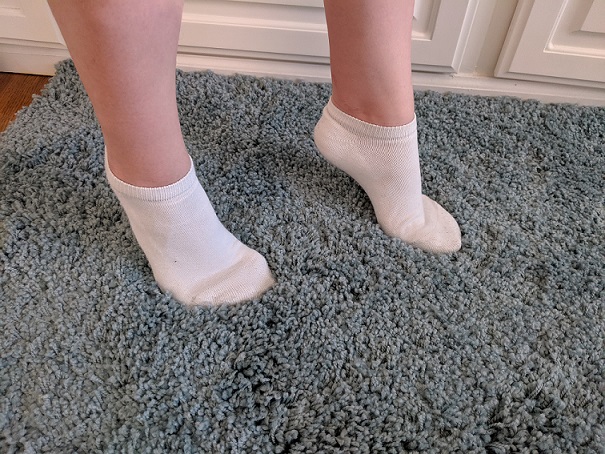Toe-walking is a pattern of walking where children walk on the toes or the balls of the feet. It is fairly common in children learning to walk. Most children will outgrow it, acquiring a typical heel-to-toe gait by 3 years old.
Clinical implications of toe-walking
Although toe-walking can be a normal variant in child gait development without long-term implications, it can also be a symptoms of an underlying neurological condition. Research has linked toe-walking with autism, cerebral palsy, and language delays. In a recent study, Martín-Casas et al. (2017) found a significant correlation between toe-walking and impaired psychomotor function and memory.
In particular, the association between language delays and toe-walking has been investigated in numerous papers. A classic study (Accardo et al., 1992) detected a significant negative correlation between language competence and toe-walking. In particular, the study found lower mean language scores in toe walkers both at 2 years and at 6 years, but not at 10 years of age (figure 1).

Although this and other research shows that toe-walking can be a marker of neurodevelopmental alterations, it is important to notice that there is evidence of a high number of toe walkers without impairment. Technically, toe-walking as a marker for neurodevelopmental impairment has low sensitivity.
Treatment
If child walks on toes out of habit, treatment is not usually needed.
When caused by underlying medical or neurological conditions, various treatments are available with varying degree of efficacy. These include physical therapy, serial casting, orthotics and injections of botulinum toxin.
Physical activities to reduce toe-walking
You child therapist may prescribe a number of activities for toe-walking:

- Pushing walking toy or cart across the floor (Figure 2.A)
- Slowly stepping up down from a raised surface (20-30cm high), (Figure 2.D)
- Standing on a balance cushion or other unstable surface with bare feet
- Sitting on bean bag or stuffed animal and pushing self across room (Figure 2.C)
- Walks backward or forward on a ramp
- Stretching exercises for calf (Figure 2.B)
References
Accardo, P., Morrow, J., Heaney, M. S., Whitman, B., & Tomazic, T. (1992). Toe Walking and Language Development. Clinical Pediatrics, 31(3), 158–160.
Danto, A.H., & Pruzansky, M. (2011). 1001 Pediatric Treatment Activities: Creative Ideas for Therapy Sessions.
Martín-Casas, P., et al. “Neurodevelopment in preschool idiopathic toe-walkers.” Neurología (English Edition) 32.7 (2017): 446-454.
Mayo Clinic (2029). Toe walking in children, accessed November 2020.
Sala, Debra A., et al. “Idiopathic toe-walking: a review.” Developmental medicine and child neurology 41.12 (1999): 846-848.





